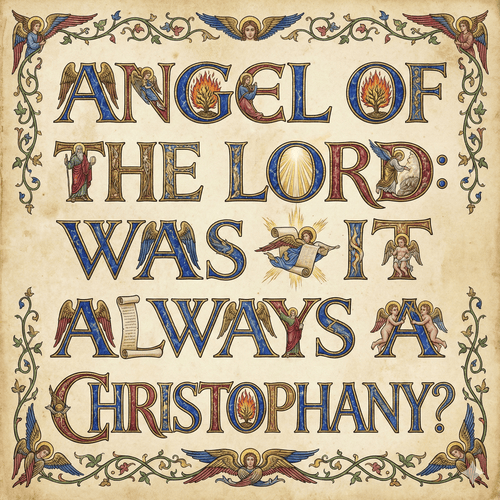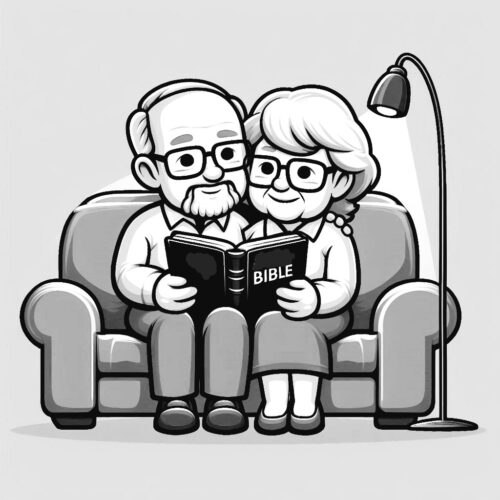The Masoretic and Septuagint: How Ancient Texts Shaped the Bible
When we open our Bibles today, we rarely consider the extraordinary journey these texts have had through history. Behind our English translations lie ancient manuscripts with their own complex histories. Two textual traditions are pillars: the Masoretic Text (MT) and the Septuagint (LXX).
The Masoretic Text represents the authoritative Hebrew text that underlies most modern Protestant Old Testament translations. The Septuagint, on the other hand, is the ancient Greek translation of the Hebrew Scriptures. Completed three centuries before Christ, it became the primary Old Testament for early Christians and remains foundational for Eastern Orthodox churches today. Understanding the two textual traditions—their origins, differences, and reliability—provides crucial insight into how we received our Bible…
ORIGIN AND HISTORY
The Septuagint (LXX)
The Septuagint is the earliest known Greek translation of the Hebrew Scriptures, produced in the 3rd century BC in Alexandria, Egypt. It was translated by Jewish scholars, likely to accommodate the large Greek-speaking Jewish population of the Hellenistic world.
The name “Septuagint” comes from the Latin word for seventy (LXX), based on the tradition that 70–72 Jewish scholars completed the translation. By the time of Christ, the LXX was widely used by Jews living outside of Israel and had even influenced Jewish thought and theology.
When the New Testament authors quoted the Old Testament, they frequently cited the Septuagint’s wording rather than the Hebrew text. This made the LXX an essential part of early Christian teaching and interpretation.
The Masoretic Text (MT)
The Masoretic Text represents the standardised Hebrew Bible, carefully copied and preserved by Jewish scribes known as the Masoretes between the 6th and 10th centuries AD. However, it’s based on much older Hebrew manuscripts, some of which date back to the time of Christ.
Unlike the LXX, which was translated into Greek, the Masoretic Text preserves the original Hebrew of the Old Testament. The Masoretes added vowel markings and pronunciation guides to safeguard the proper reading of the text, ensuring consistency for future generations.
By the time of the Reformation, the Masoretic Text became the authoritative Old Testament for Protestants. Reformers, Luther and Calvin even emphasised on returning to the Hebrew Scriptures rather than relying on the Greek Septuagint or the Latin Vulgate.
KEY DIFFERENCES BETWEEN THE MT AND THE LXX
Differences in the Old Testament Canon:
One of the most obvious differences between the MT and the LXX is the scope of the Old Testament canon. The Masoretic Text contains the 39 books of the Hebrew Bible that are recognised by Protestant Christians today. The LXX, on the other hand, includes additional books, known as the Deuterocanonical books (or Apocrypha), which were later accepted by the Roman Catholic and Eastern Orthodox Churches, but rejected by Protestants.
If the early church had fully adopted the Septuagint’s canon, our Old Testament would be significantly longer today.
Differences in Messianic Prophecies
Another key difference is the wording of Messianic prophecies—some of which appear clearer in the Septuagint than in the Masoretic Text.
Example 1: Isaiah 7:14 – The Virgin Birth Prophecy
- Masoretic Text: “Behold, the young woman shall conceive and bear a son…”
- Septuagint: “Behold, the virgin shall conceive and bear a son…”
The Septuagint’s use of “virgin” (parthenos in Greek) aligns perfectly with Matthew 1:23, where the apostle applies this prophecy to Christ’s birth. If we relied only on the Masoretic Text, the prophecy would seem less explicitly Messianic.
Example 2: Psalm 22:16 – The Crucifixion Prophecy
- Masoretic Text: “Like a lion are my hands and my feet.”
- Septuagint: “They have pierced my hands and my feet.”
The Septuagint’s reading aligns with the crucifixion of Christ, while the Masoretic version is more obscure.
Differences in Chronology
The genealogies in Genesis 5 and 11 differ between the MT and the LXX, leading to different biblical timelines.
The Masoretic Text places the Flood around 2,348 BC. The Septuagint’s numbers place it around 3,300 BC, adding about 1,300 extra years to biblical history.
This affects the dating of Adam, the Flood, and the call of Abraham, which in turn impacts how the Bible aligns with archaeology and secular history.
Differences in Old Testament Canon
Perhaps the most obvious difference between the textual traditions concerns which books they include. The Septuagint contains several books not found in the Masoretic Text: 1 Esdras, Tobit, Judith, 1-4 Maccabees, Wisdom of Solomon, Sirach (Ecclesiasticus), Baruch, Letter of Jeremiah, and additions to Daniel and Esther. Protestant traditions typically classify these works as “apocryphal,” while Catholic and Orthodox traditions consider many of them “deuterocanonical” (part of a second or later-defined canon).
EVALUATING THE RELIABILITY OF BOTH TEXTS
Why Do Protestants Trust the Masoretic Text? The Masoretic Text represents the traditional Hebrew Scriptures as preserved by Jewish scribes. The Reformers rejected the Apocryphal books, arguing they were never part of the original Hebrew canon.
The Masoretic Text was meticulously copied, reducing errors over time.
Is the Septuagint Still a Reliable Witness? The New Testament authors quoted the LXX, showing its early authority. Some Dead Sea Scrolls match LXX readings rather than the MT, suggesting the LXX sometimes preserves an older textual tradition.
However, Septuagint manuscripts vary, meaning the LXX isn’t always consistent.
WHAT IF OUR BIBLES WERE MODELLED ON THE LXX?
- The Old Testament would be longer, including books like Maccabees, Sirach, and Wisdom of Solomon.
- The Messianic prophecies would be more explicit, especially in texts like Isaiah 7:14 and Psalm 22:16.
- Biblical chronology would be different, shifting our understanding of early biblical history.
- Protestant theology might have been shaped differently, possibly retaining some doctrines that developed in the Eastern Orthodox and Catholic traditions.
WHY DID THE EARLY CHURCH ULTIMATELY FAVOUR THE MT?
Jewish communities rejected the LXX, leading later Christians too, to follow the Hebrew tradition.
The Apocryphal books in the LXX raised theological concerns, leading to their rejection by Protestants.
By the time of the Reformation, scholars emphasised returning to the Hebrew text that Jesus and the Jewish people recognised.
CONCLUSION: WHICH ONE SHOULD WE TRUST?
The Masoretic Text and Septuagint represent two streams of biblical tradition, each with distinctive strengths and limitations. Rather than forcing an either/or choice between the traditions, their differences and agreements together provide a fuller picture of Scripture’s transmission history.
The Masoretic Text offers a meticulously preserved Hebrew tradition with extraordinary stability over centuries, while the Septuagint provides earlier manuscript witnesses and preserves readings demonstrably ancient enough to influence New Testament authors. Where they agree—which is most of the time in matters essential to faith—their independent witness strengthens our confidence in the reliable transmission of God’s Word.
Their differences remind us textual transmission always occurs within specific historical and cultural contexts. God worked through human agents—both the Alexandrian Jewish scholars who produced the Septuagint and the Masoretic scribes who standardised the Hebrew text—to preserve His revelation. Neither tradition represents the “perfect” text, yet through both, God’s message remains clear and accessible.
THE MASORETIC AND THE SEPTUAGINT: RELATED FAQs
Why Did the Early Jews Reject the Septuagint? By the late 1st century AD, many Jewish leaders distanced themselves from the Septuagint because Christians were using it to prove Jesus was the Messiah. The Jewish community instead solidified the Hebrew text (which later became the Masoretic Text) as their authoritative Scripture, rejecting the Greek translation that had become central to the early church.
- Do Any New Testament Books Quote the Masoretic Text Instead of the Septuagint? While the New Testament writers mostly quoted the Septuagint, there are cases where they seem to align more closely with the Hebrew Masoretic tradition. For example, Jesus’ reference to the “Shema” (Mark 12:29) follows the Masoretic Hebrew rather than the Greek LXX. This suggests that the apostles were aware of both traditions and occasionally drew from the Hebrew text.
- How Do the Dead Sea Scrolls Factor Into This Discussion? The Dead Sea Scrolls (DSS), discovered in the 20th century, contain fragments of the Old Testament that predate both the Masoretic Text and the Septuagint. Interestingly, some scrolls align more closely with the LXX, while others resemble the MT, indicating that multiple textual traditions coexisted before the Masoretic standardisation. This supports the idea that the LXX and MT both preserve authentic ancient readings.
Why Do Roman Catholics and Eastern Orthodox Accept the Apocrypha? The Roman Catholic and Eastern Orthodox Churches accept the additional books found in the Septuagint because the early church, especially in the Greek-speaking world, used the LXX as Scripture. At the Council of Trent (1546), the Catholic Church officially affirmed these books as canon in response to the Protestant Reformation, which rejected them based on their absence from the Hebrew Masoretic Text.
- Are There Doctrinal Differences Between the LXX and the MT? Most theological doctrines remain unchanged between the MT and LXX, but certain texts carry different nuances. For example, in Genesis 4:8, the LXX includes Cain’s statement to Abel (“Let us go out to the field”), which is missing in the MT. Also, the LXX sometimes presents stronger Messianic prophecies, which is why early Christians favoured it. However, no major Christian doctrine depends exclusively on the LXX or MT.
- Did Jesus Speak Hebrew or Greek, and Does That Matter for This Debate? Jesus likely spoke Aramaic as His primary language, but He was also familiar with Hebrew and Greek. Many Jews in first-century Israel used the Septuagint in daily life, especially in Hellenised regions. Since Jesus and the apostles quoted the LXX extensively, this suggests Greek Scripture was widely accepted in the early church, even alongside the Hebrew text.
Could Modern Scholars Ever “Reconstruct” the Original Old Testament? While scholars compare the Masoretic Text, Septuagint, Dead Sea Scrolls, and Samaritan Pentateuch to get closer to the original, no single manuscript perfectly preserves every original word. However, the remarkable consistency between these texts over thousands of years affirms that God has faithfully preserved His Word despite minor textual variations.
THE MASORETIC AND THE SEPTUAGINT: OUR RELATED POSTS
Editor's Pick

The Throne-Room Vision: Who Did Isaiah See?
The scene is unforgettable: Isaiah stands in the temple, and suddenly the veil between heaven and earth tears open. He [...]

The Angel of the Lord: Can We Be Certain It Was Christ All Along?
Throughout the Old Testament, a mysterious figure appears: the Angel of the LORD. He speaks as God, bears God’s name, [...]
SUPPORT US:
Feel the Holy Spirit's gentle nudge to partner with us?
Donate Online:
Account Name: TRUTHS TO DIE FOR FOUNDATION
Account Number: 10243565459
Bank IFSC: IDFB0043391
Bank Name: IDFC FIRST BANK






